On our first day in Melbourne, we visited the National Gallery of Victoria (NGV) for their Alexander McQueen exhibition. Subtitled Mind, Mythos, Muse, the exhibition showcases over 120 garments and accessories from McQueen and those affiliated. I have a lot of opinions on this exhibition that I can’t wait to share. I want to start with the critiques then move onto the positives, or what worked well. There are two main critiques that, if you’ve read my blog before, will come as no surprise.
Before I delve in, I want to share a bit more context. The exhibition is a combination of garments and historical objects sourced from the National Gallery and the Los Angeles County Museum of Art. As the interests of McQueen were varied, the exhibition reflects the many themes and ideas that inspired his work. There were some themes that resonated with me, but I’ll leave that discussion for later.
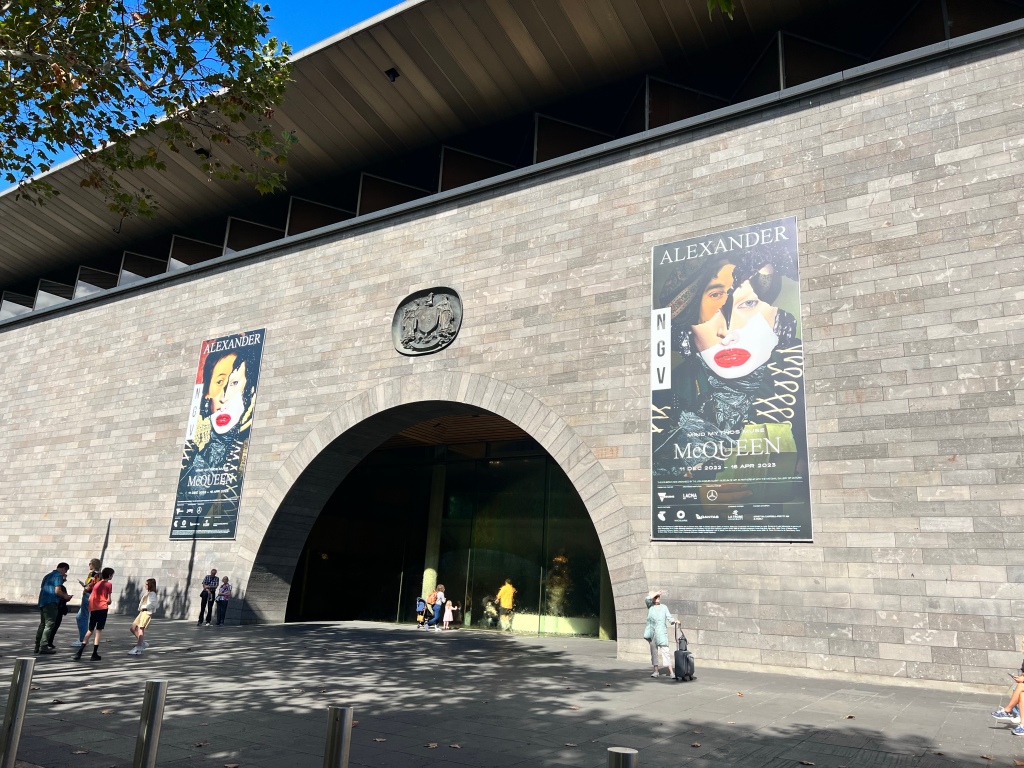
Critique 1: Labels
In the past, I have written extensively about my issue with art gallery labels and how they need to be more inclusive and accessible. While I felt that the language in this exhibition was slightly more approachable than other NGV exhibitions, there is still a major accessibility issue.

Small, white font printed on a light grey background is not something I enjoyed reading. I took a photograph and changed the contrast levels so it didn’t give me a headache. I don’t imagine this particular combination of colours could be read by everyone. The labels for the garments were mostly on the floor which is fine if they are short and sweet. Quite a few of the labels, however, were extensive. Trying to read them on the floor was a challenge. While I understand the design of the exhibition might have prevented accessible labels in some rooms, as far as I could see there were no visual aids on offer. There is a PDF of labels you can download but it is a huge document and is quite confusing.
Critique 2: Crowd Control
We visited the exhibition around 10.30am on a Friday. Originally, we were planning to see the exhibition on a Saturday. I am so glad we made the decision to go a day early because I can’t imagine how busy it will be on a weekend. This is great! I love seeing a busy exhibition with people engaging and admiring the works. However, the design of the exhibition did mean there were multiple bottle neck areas where it became uncomfortably busy and quite overwhelming.
We thoroughly enjoyed the larger rooms which had space to breath. These are the rooms where garments are on display in the middle and people can walk either side. There are a couple of rooms like this, but the majority have garments on one side so it feels a bit like a conveyor belt to get through. I assumed that timed tickets would overcome this barrier, but it does feel that a lot of tickets are offered per time slot. More than is a comfortable number.

Those were my two major concerns with the exhibition. I now want to switch and talk about the positives, or what worked well in the space.
Positive 1: Combining Old and New
As stated in the introductory panel, the exhibition not only showcases the work of McQueen and associates, but objects from museum collections. These match the overarching themes and help to contextualise some of the pieces. It is curated so seamlessly with the old and the new interacting well in the space. To illustrate this point, I want to share a couple of examples.
My favourite is this dress – a 1760s silk dress from Italy, currently in the Los Angeles County Museum of Art collection. It blends into the display so well and clearly shows an inspiration example for McQueen.

In the same room there is this Afternoon Dress from 1905. Just behind is a jacket and skirt inspired by the film Picnic at Hanging Rock. They blend so well together.

The last example I want to share is this sculpture (circa 1871) titled Owl and Skull by Jean-Baptiste Auguste Clésinger. It is combined with McQueen’s Raven Cape which also speaks to the theme of memento mori.


Positive 2: Combination of Garments and Accessories
Each individual display is a work of art. Most mannequins combine shoes, a dress/other clothing, and a headdress. The Scottish-themed room was my favourite for this reason. I’ve included a few photographs below. This room also contains my favourite dress overall, the tartan one with tulle underneath.



Positive 3: Personal Interest Themes
Going to be a bit selfish here and say one of the positives for me, was just how many themes were of personal interest. Not only are there some anatomical references, but there is one theme which refers to the Salem Witch Trials. I wrote about the trials extensively for my honour’s thesis hence the interest. As McQueen had familial connections to the trials, this inspired one of his autumn-winter ranges.

Overall, this exhibition is fantastic if you are interested in McQueen, fashion, and how they have been inspired by the past. For this reason, the exhibition will also appeal to those interested in history and design.
Logistical Information
The Alexander McQueen exhibition is open until Sunday 16 April. It is open from 10am to 5pm daily, with extended opening hours on the final day (until 9pm). I am hesitant to say it is an accessible exhibition. This is considering the labels and bottle necks when it’s crowded. In fairness, there is some information on their website that would prepare you for a visit if you needed assistance. I would highly recommend looking at this if required.

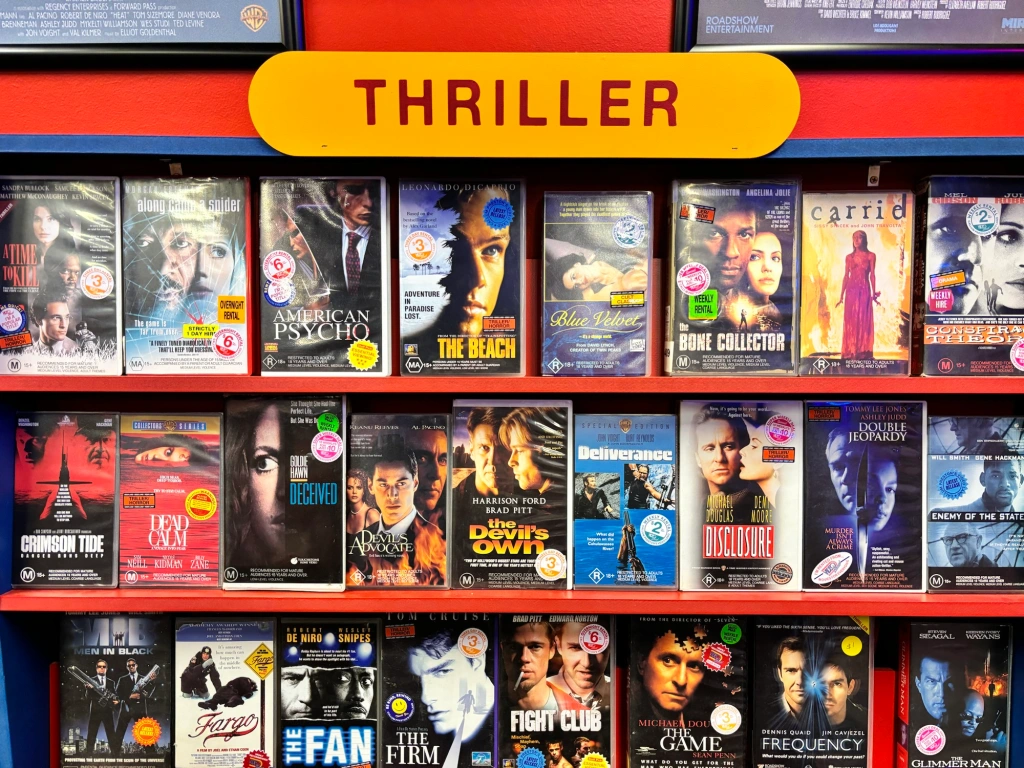
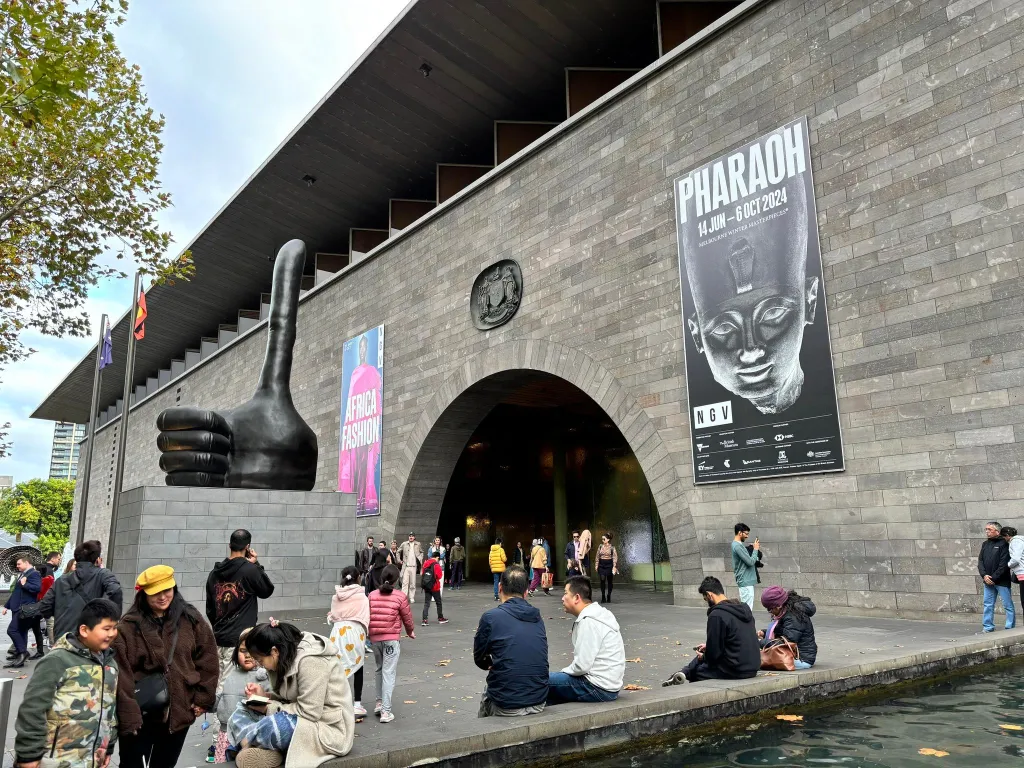
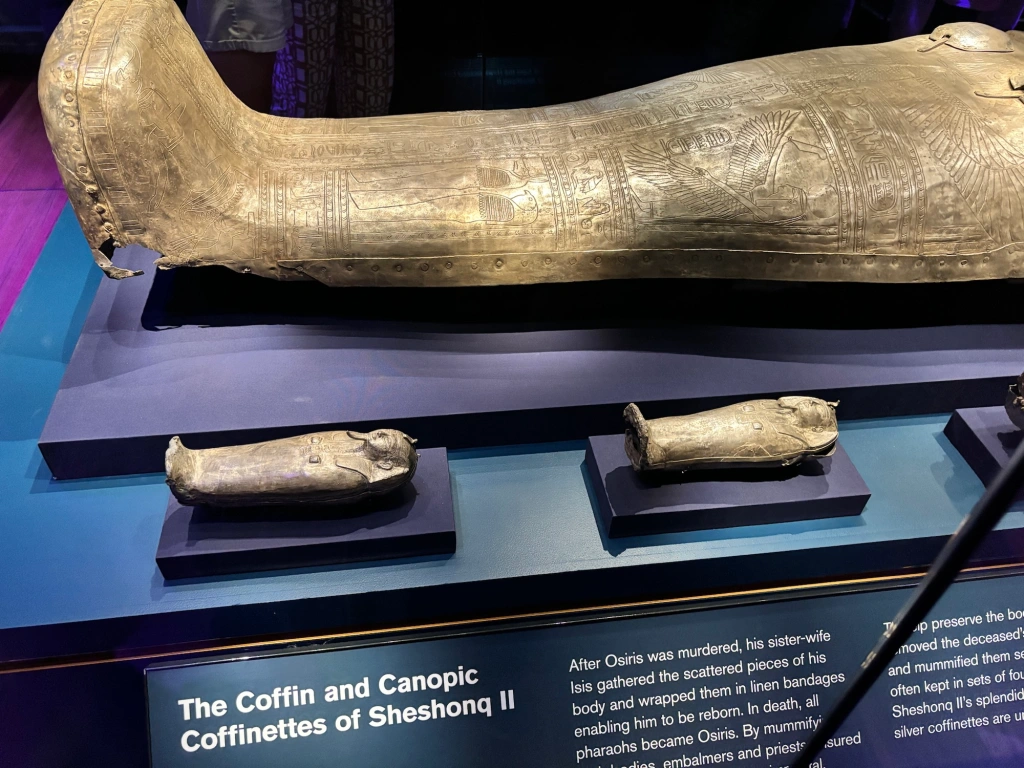


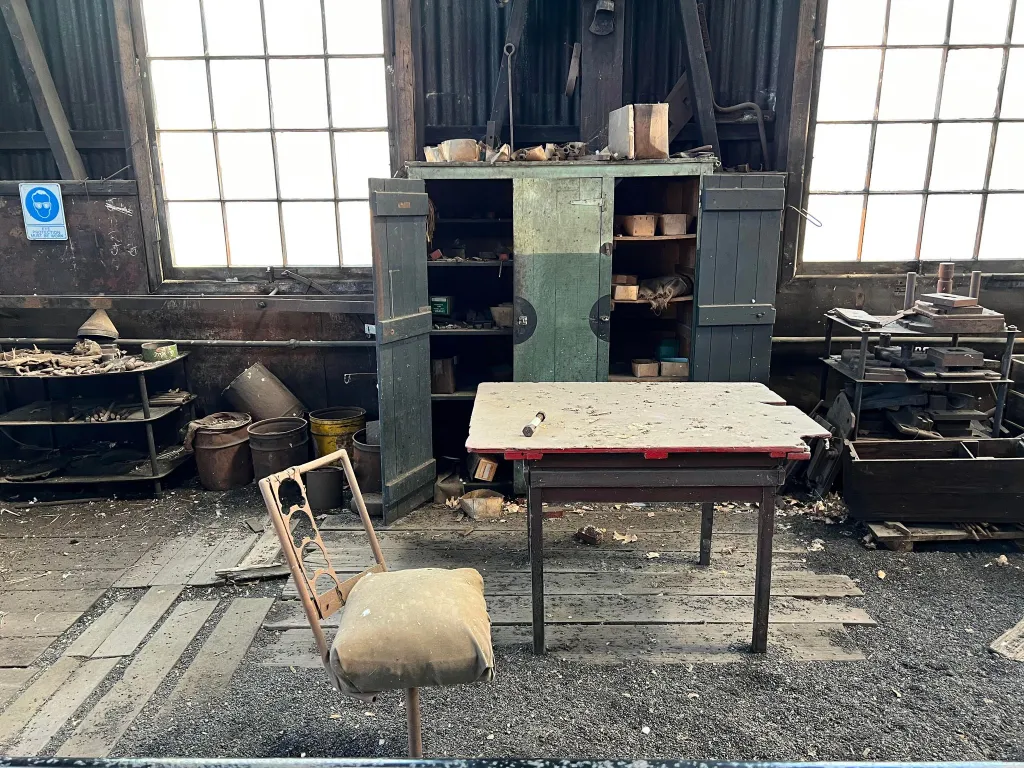
Leave a comment